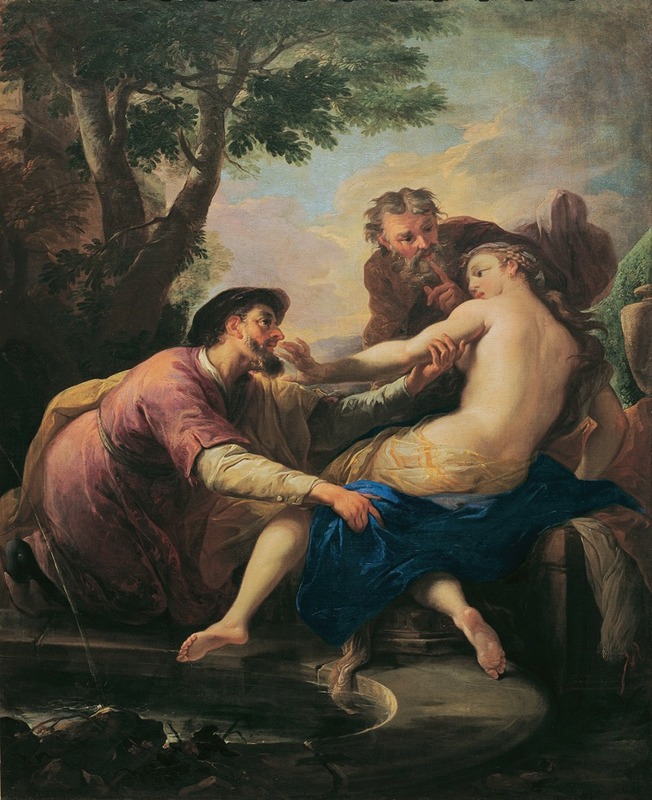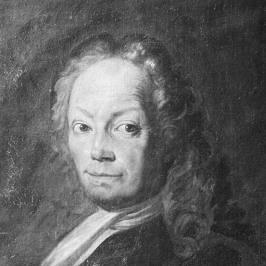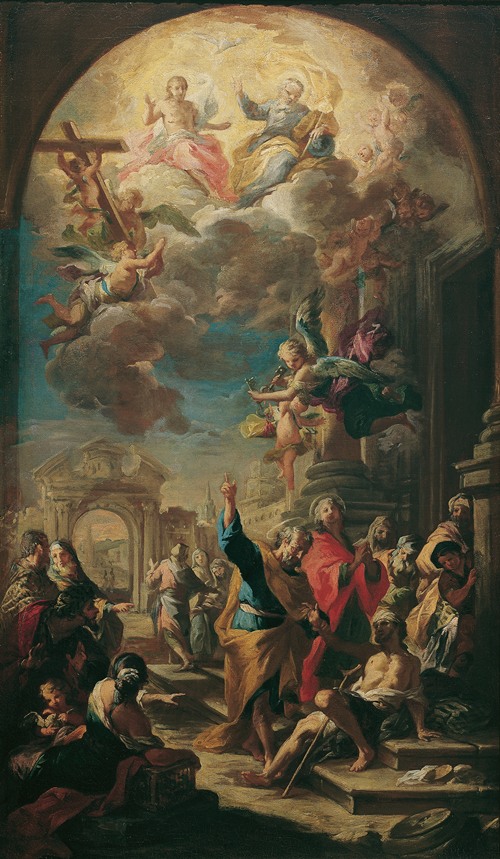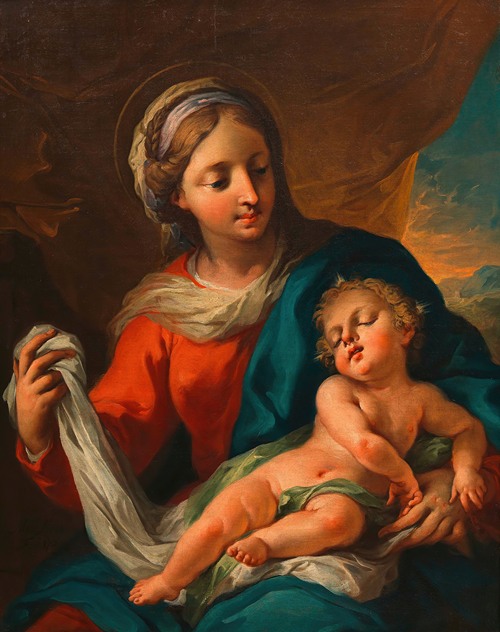

Martino Altomonte, born Johann Martin Hohenberg was an Italian Baroque painter of Austrian descent who mainly worked in Poland and Austria.
Martino Altomonte (Johann Martin Hohenberg) was born in a family of painters. Hohenberg's father was born in the Tyrol and emigrated to Naples. At the age of 15 he was apprenticed to Giovanni Battista Gaulli in Rome. Later he trained under the guidance of Carlo Maratti.
In 1684 Hohenberg became the court painter of John III Sobieski, king of Poland, and changed his name to Altomonte upon the occasion. During his stay in Warsaw he mostly painted battles pieces (for example, the Siege of Vienna) and royal portraits. He also produced a lot of altarpieces, most of which did not survive. One that was not destroyed, the Sacrifice of Abraham (now Tarnów, Diocese Museum), shows Altomonte as “a follower of Neapolitan chiaroscuro painting”. His son Bartolomeo Altomonte, also a painter, was born in 1694.
Altomonte moved to Vienna c.1699-1702, where he remained for the rest of his life, creating many frescoes and altarpieces. In 1707 he was appointed a teaching member of the Akademie der Bildenden Künste that probably lead to the commission to decorate the Neue Favorita, an annexe of Schloss Augarten.
The oil paintings executed during that period and that came down to us indicate that Altomonte developed his own style based on the mixture of Neapolitan and Venetian styles of painting, thus initiating Viennese Baroque painting. “In his oil paintings he scattered Venetian pastel tones among dramatic elements of Neapolitan chiaroscuro.”
In 1709-10 he worked on ceiling paintings for the archbishop's Residenz at Salzburg. He later executed altar paintings in Vienna for the Dorotheerkirche (1713; now in Rheindorfer Parish Church), the Peterskirche and the Stephansdom (both 1714) and for the parish church in Krems and the Deutschordenskirche in Laibach (now Ljubljana, Slovenia; both 1715). In 1716 he painted the ceiling frescoes in the Lower Belvedere in Vienna.



